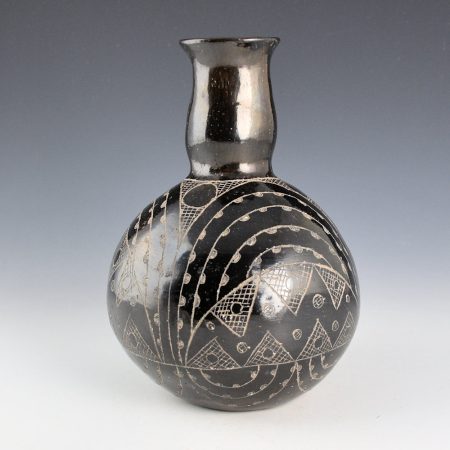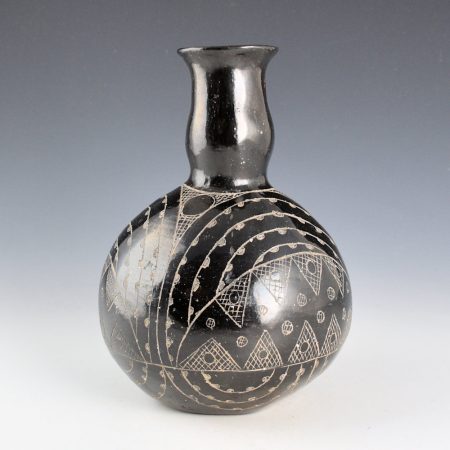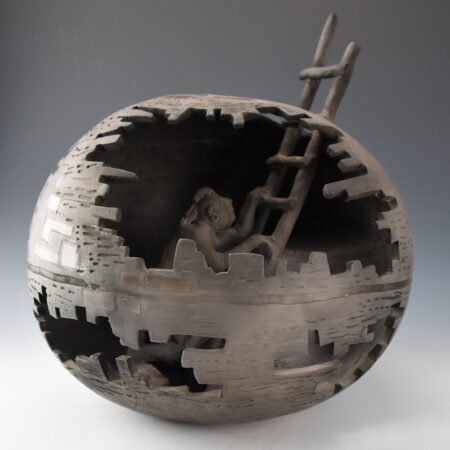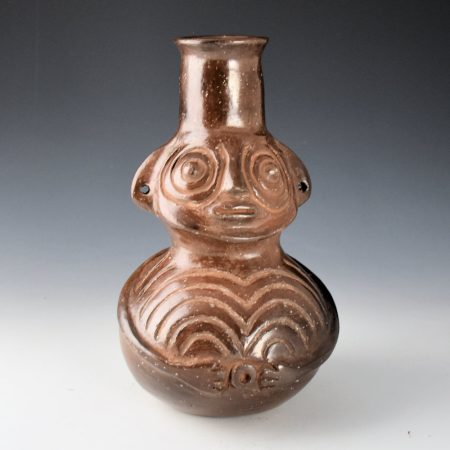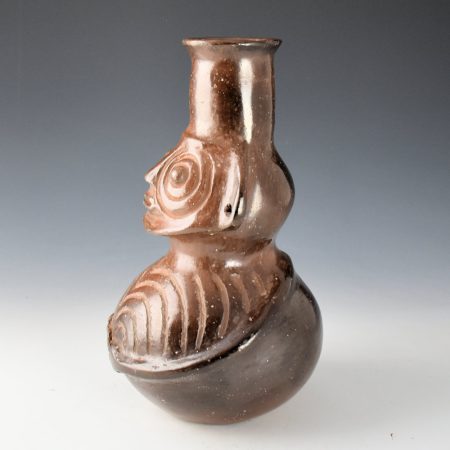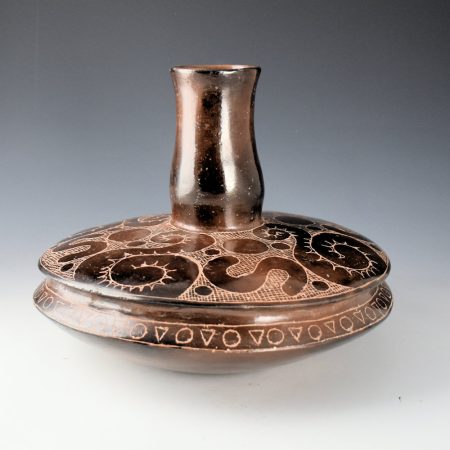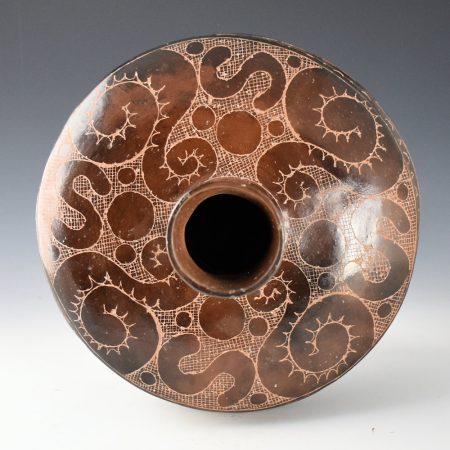
The Caddo lived in their homeland around the four-state regions of Eastern Texas, Western Louisiana, Eastern Oklahoma, and Western Arkansas since 200BC and coalesced into the unique Caddoan cultural identity around 700 AD. The Caddo were a confederacy of around 12-16 subtribes that all spoke the Caddoan language and had the same culture and practices. The name of the Caddo comes from the American shortening of the main tribe, the Kadohadacho, who lived in Arkansas around the great bend of the Red River. The Caddo were closely associated with the Mississippian culture of the American Southeast, but unique from it as well in their language, priests, leadership, city layout, agriculture, and their widely sought after and ancient pottery tradition. They would send trading parties all over the continent and traded directly with Cahokia, Central American tribes, and Pecos Pueblo.
The traditional pottery of the ancient Caddo has a long history and evolution of designs to become a very recognizable and unique cultural identity. There are hundreds of typologies of specific Caddo vessels as the matriarchs of the clans determined the pottery type for a family through generations. Therefore the typologies were made over and over in a linear fashion with subtle changes each time and different confederated Caddo tribes made different typologies. There are literally around 60,000 known whole vessels in museums throughout the United States, England, Spain, France, and Germany as it was traded far and wide.
Today there are only 2 Caddo potters: Jeri Redcorn, who revived the tradition in the 90s, and Chase Kahwinhut Earles, who began in 2009 and has furthered the revival with the use of ancient methods and materials.


